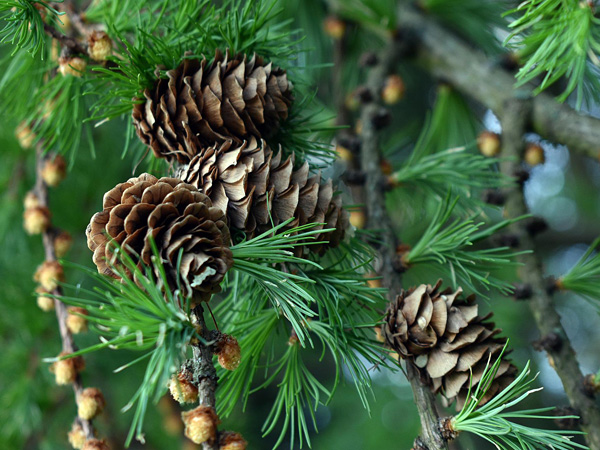A strict trade-off between seed size and numbers in trees is not a rule – new publication in Nature Communications
The relationships that control seed production in trees are fundamental to understanding the evolution of forest species and forecasting the ability of forest stands to recover after natural (e.g., drought, fire) and anthropogenic (e.g., logging) disturbances. This issue was addressed in an article recently published in Nature Communications, co-authored by Magdalena Żywiec, Łukasz Piechnik and Barbara Seget from our Institute. The authors analysed fecundity data from 714 tree species worldwide and drew some general conclusions. First, seed production is not constrained by a strict trade-off between seed size and numbers. Generally, species that invest in large seeds produce more than this compromise predicts, with both characteristics, size and number, being quite loosely related. Second, gymnosperms have lower seed production than angiosperms, possibly due to their extra investments in protective woody cones. Third, nutrient-demanding species have low seed production, which may be due to the resource allocation strategy of these species, primarily in vegetative growth, or the high seed cost. The above findings are valuable from the point of view of the proper (i.e., including the aspect of tree reproduction) modelling of forest responses to global environmental changes.
The original article:
Qiu T., Andrus R., Aravena M.-C., Ascoli D., Bergeron Y., Berretti R., Berveiller D., Bogdziewicz M., Boivin T., Bonal R., Bragg D.C., Caignard T., Calama R., Camarero J.J., Chang-Yang C.-H., Cleavitt N.L., Courbaud B., Courbet F., Curt T., Das A.J., Daskalakou E., Davi H., Delpierre N., Delzon S., Dietze M., Calderon S.D., Dormont L., Espelta J., Fahey T.J., Farfan-Rios W., Gehring C.A., Gilbert G.S., Gratzer G., Greenberg C.H., Guo Q., Hacket-Pain A., Hampe A., Han Q., Hille Ris Lambers J., Hoshizaki K., Ibanez I., Johnstone J.F., Journé V., Kabeya D., Kilner C.L., Kitzberger T., Knops J.M.H., Kobe R.K., Kunstler G., Lageard J.G.A., LaMontagne J.M., Ledwon M., Lefevre F., Leininger T., Limousin J.-M., Lutz J.A., Macias D., McIntire E.J.B., Moore C.M., Moran E., Motta R., Myers J.A., Nagel T.A., Noguchi K., Ourcival J.-M., Parmenter R., Pearse I.S., Perez-Ramos I.M., Piechnik L., Poulsen J., Poulton-Kamakura R., Redmond M.D., Reid C.D., Rodman K.C., Rodriguez-Sanchez F., Sanguinetti J.D., Scher C.L., Schlesinger W.H., Schmidt Van Marle H., Seget B., Sharma S., Silman M., Steele M.A., Stephenson N.L., Straub J.N., Sun I.-F., Sutton S., Swenson J.J., Swift M., Thomas P.A., Uriarte M., Vacchiano G., Veblen T.T., Whipple A.V., Whitham T.G., Wion A.P., Wright B., Wright S.J., Zhu K., Zimmerman J.K., Zlotin R., Zywiec M., Clark J.S. 2022. Limits to reproduction and seed size-number trade-offs that shape forest dominance and future recovery. Nature Communications 13: 2381. DOI

Photo: pixabay.com.